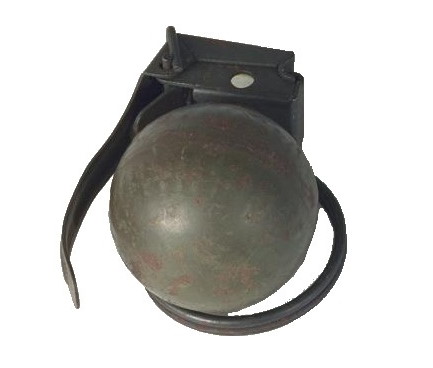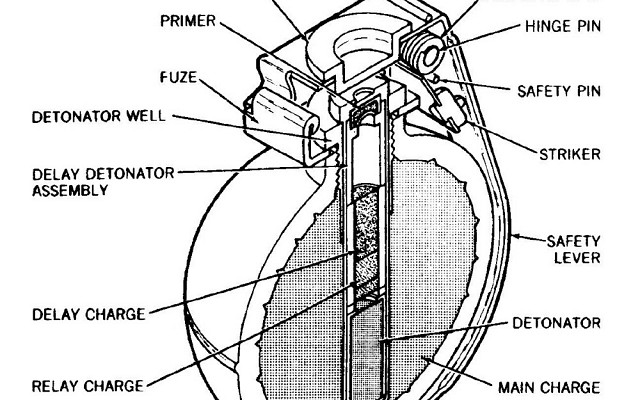V-40
Mini Grenade
Overview

V-40
V-40 Mini Grenade. Note the size of the lever and safety pin in comparison with the grenade body.
Source: Unknown author -
© Copyright lies with original owner
Description
Introduction
The V40 is a defensive hand grenade of Dutch origin. It was developed in the late 1960's and is unique due to its small size. Therefore the V-40 Mini-grenade designation is more common than the plain V-40 designation.
Design
The V-40 is similar in design to many other fragmentation grenades. It has a spherical pre-notched steel body and a delayed fuse. What makes the V-40 special is its size. The body is much smaller than most grenades and the fuse of normal size looks out of proportion. The fuse has a delay of about 4 seconds. As long as the level is not released the V40 remains safe and the pin can be replaced if needed. An inert model is available for training.
Firepower
Despite its very limited weight the lethality is still quite good. The V-40 is filled with 36 g of Comp B that turns 68 g of the body into 520 fragments. Given the way the body is pre-notched the fragments scatter evenly in all directions. The lethal radius is about 5 meters and at 25 meters the likelihood of danger is too small to be significant. The limited explosive power makes the V-40 very useful in urban combat.
Users
The V-40 has been acquired by various European users. It was extensively used by US Navy SEALs during the Vietnam war. Although of Dutch origin it never made it into the Netherlands army.


